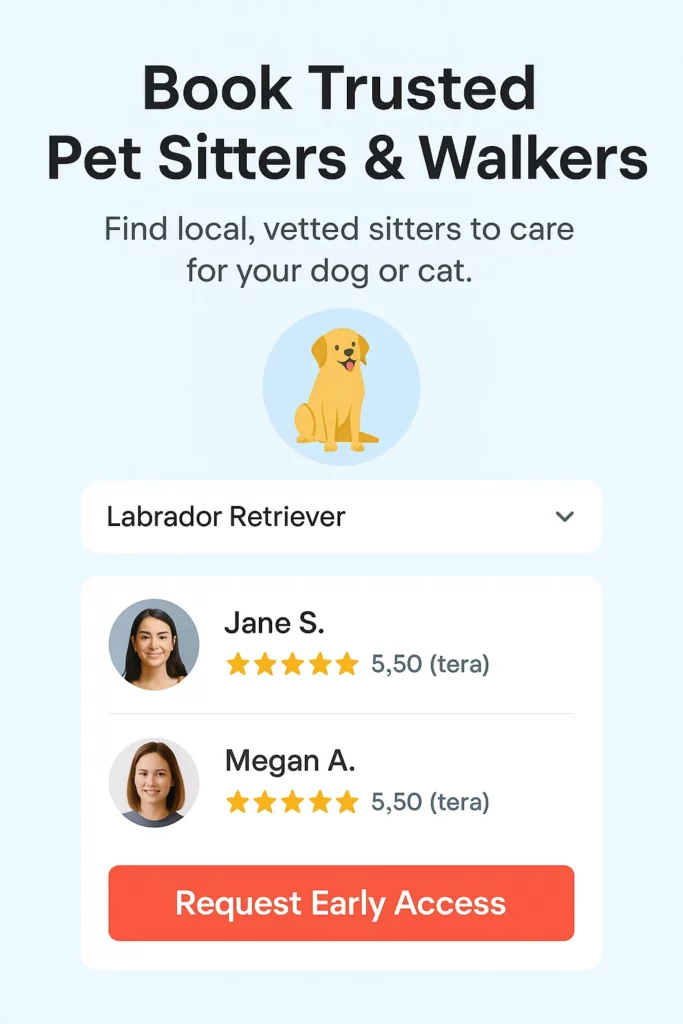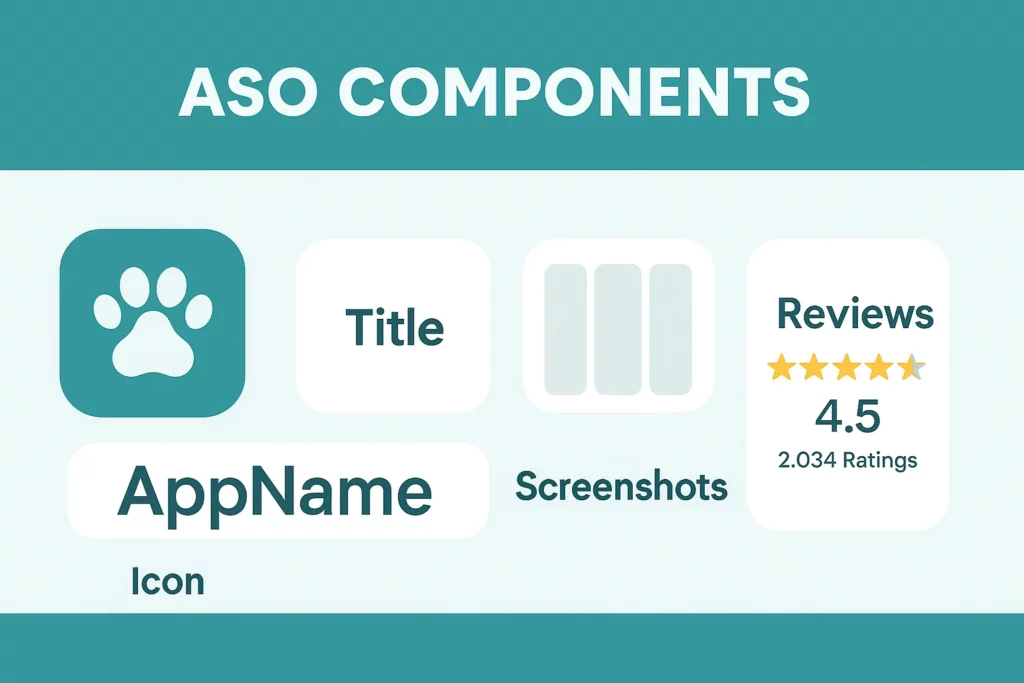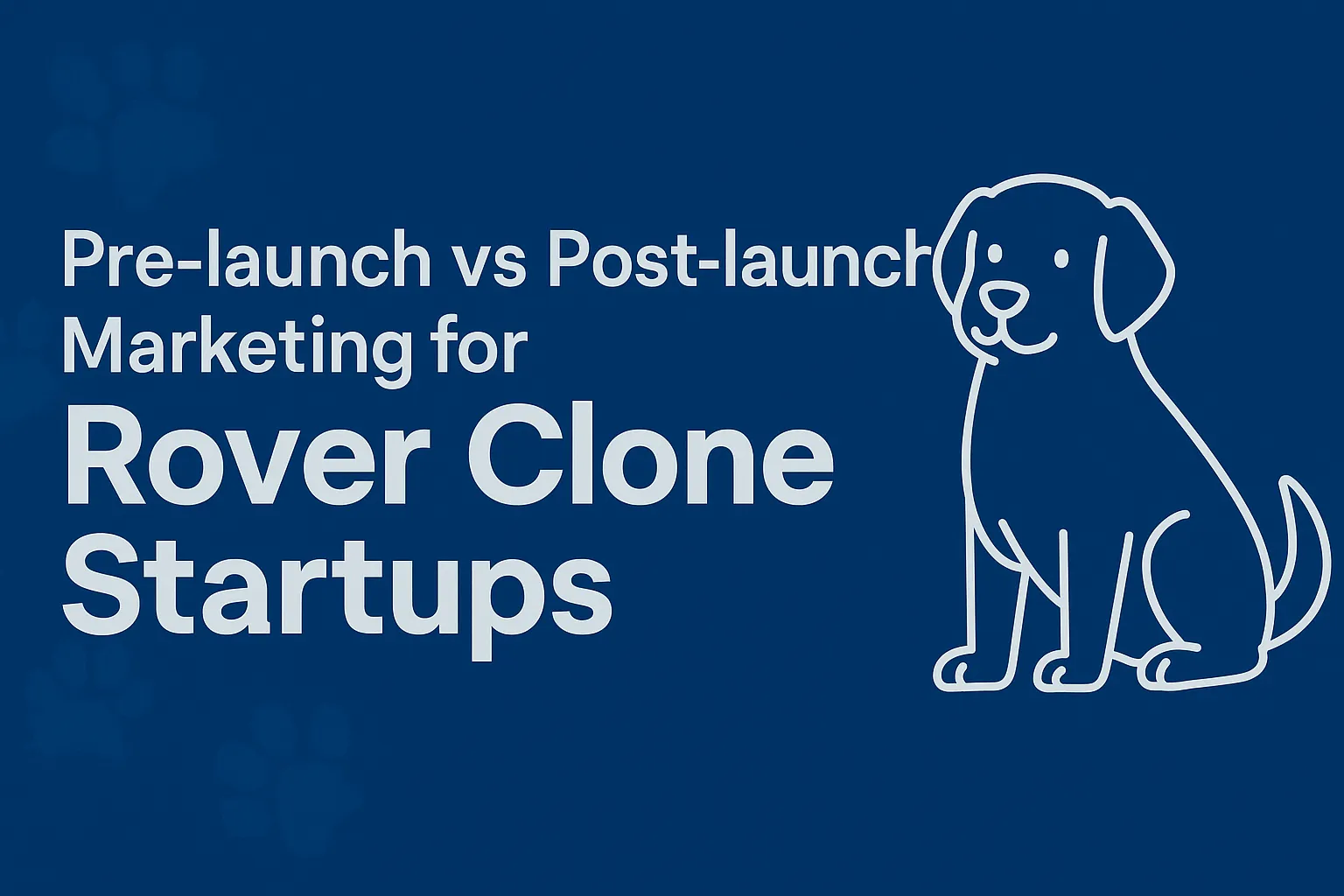Launching a Rover clone is like starting the world’s cutest startup—with slobbery kisses, wagging tails, and yes, sky-high user expectations. You’re not just connecting pet parents with sitters; you’re asking them to trust a stranger with their fur babies. That’s not just commerce—it’s commitment.
To earn that trust and get noticed, you need sharp marketing strategies for rover clone. Start by partnering with local pet stores, vets, and pet groomers to build credibility and reach your target audience directly. Offer referral bonuses to both pet parents and sitters to spread the word organically. Utilize Instagram and TikTok to share adorable pet content and testimonials—because nothing goes viral like a puppy wearing sunglasses. Leverage Google Ads and local SEO to appear in searches when someone types “dog sitter near me.” And don’t forget email marketing—keep users engaged with helpful pet tips, service reminders, and special offers.
And here’s the plot twist: you could build the most secure, sitter-verified, vet-backed app in the market, but if you don’t market it properly—nobody’s downloading it. Pet parents aren’t psychic. They need to hear about you, trust you, and click that “Book Now” button with a tail-wagging smile.
At Miracuves, we’ve helped countless entrepreneurs launch Rover-style platforms with real traction. Whether you’re pre-launching to build hype or post-launching to scale, this guide will walk you through how to do it right—without barking up the wrong tree.
What Is Rover and How It Works
A Rover clone is a pet care service platform similar to Rover.com, designed for booking pet sitters, dog walkers, and other pet-related services. It connects pet owners with verified caregivers through a user-friendly interface. The clone works by allowing users to search for local pet sitters, view profiles, book services, and make secure payments. It includes features like real-time tracking, service scheduling, reviews, and messaging. Pet sitters can manage bookings and update availability, while the admin oversees user management, payments, and service listings.
Learn More: Rover App Explained: What It Is & How It Works
Why Pre-launch Marketing is a Pet-tech Must-Have
Would you trust a brand-new pet sitter without checking reviews? Neither would your users. Pre-launch marketing is your app’s social proof warmup—it builds awareness, trust, and demand before your app ever lands on the App Store.
The Power of Pre-launch
- Builds trust before your first booking
- Creates a waitlist of eager pet parents
- Helps validate your idea (Do people want dog walkers or cat sitters?)
- Gives you time to fine-tune the UX before going live

Pre-launch Strategy That Actually Works
1. Pet Parent-Focused Landing Page
Use real pet imagery, highlight sitter vetting, include a location search mockup, and add “Join Beta” CTAs. Make it look friendly, secure, and tail-waggingly easy.
2. Email Funnel for Pet Sitters & Parents
Segment your audience. Pet parents want sitter trust, insurance, and price transparency. Sitters want flexible hours, quick payouts, and a strong user base.
3. Micro-influencer Outreach
Dog groomers on Instagram, pet vloggers on YouTube, or TikTokers who do “day in the life of a pet parent.” Gift them branded swag and early access.
Stat Source: According to TechCrunch, over 60% of Gen Z and Millennials discover new apps through social media creators.
4. Beta Testing & Feedback Loops
Invite pet owners to test sitter profiles, filters, and booking UX. Feedback helps you fine-tune and gives you testimonials to use on launch day.
Post-launch Marketing: Fetching Growth, One User at a Time
Okay, launch day is here. Now what? You’ve got the bones—you need the bookings. Post-launch marketing is about momentum, growth, and trust amplification.
Key Goals for Post-launch
- Turn installs into active bookings
- Drive reviews, referrals, and rebookings
- Optimize sitter availability and coverage
- Establish your platform as a trusted local brand
Winning Post-launch Tactics
1. ASO for Local Pet Keywords
Use app store keywords like:
“Dog walker near me”, “cat sitter app”, “pet boarding booking app”, “trusted dog care”
2. Retargeting Ads
Did someone install but not book? Hit them with a cute puppy face and “Still need a sitter for Max this weekend?” CTA. Use Facebook, Google Display, and Instagram.
3. Referral Bonuses
Offer “Give $10, Get $10” credits to both pet sitters and pet parents. Build viral loops where a single user invites their whole dog park group chat.
4. Location-Based Push Notifications
Trigger personalized messages like:
“5 new dog sitters in Brooklyn this week—book early!”
or
“Your favorite sitter, Maya, just became available for July.”
Pre-launch vs Post-launch: What’s the Real Difference?
| Phase | Pre-launch | Post-launch |
|---|---|---|
| Goal | Hype, signups, sitter onboarding | Retention, growth, monetization |
| Tactics | Landing page, influencer outreach, waitlist | ASO, retargeting ads, referrals |
| Audience Focus | Awareness and trust-building | User activation and loyalty |
| Tools | Mailchimp, Carrd, Airtable | Firebase, Appsflyer, Intercom |
Common Mistakes That Make Startups Whimper
- Waiting till post-launch to think about marketing
By then, it’s like throwing a party no one RSVP’d to. - Only marketing to one side of your marketplace
Sitters need to feel wanted, too. - Ignoring rebooking potential
Add quick-book buttons like “Book Sasha again for this weekend?” - No local SEO strategy
Pet care is hyper-local. Rank for your user’s ZIP code.

Conclusion
Get ready for smart tags, GPS walks synced with video, and even AI-generated pet reports. Startups that market these as game-changing—not gimmicks—will own the next frontier in pet tech.
Learn how to Build Your Own Pet Care App with Miracuves
At Miracuves, we help innovators launch high-performance app clones that are fast, scalable, and monetization-ready.
Ready to turn your idea into reality? Let’s build together.
FAQs
1) How do I attract both sitters and pet parents before launch?
Craft separate messaging. Pet parents care about trust and ease. Sitters want income and flexibility.
2) How long should I run my pre-launch campaign?
With Miracuves delivering your platform in just 3–6 days, you can begin pre-launch marketing immediately, giving you time to build anticipation and prepare your user base.
3) Is email marketing still worth it?
Absolutely. Email is great for onboarding, feedback loops, and driving first bookings.
4) What’s the best platform to advertise my app?
Start with Facebook and Instagram for B2C and use TikTok or YouTube for pet-friendly influencer content.
5) Should I offer free bookings to early users?
Yes! It builds reviews and creates word-of-mouth momentum. Just don’t let it go on too long.
6) Do I need to be in multiple cities at launch?
Nope. Start local. Dominate one ZIP code first, then scale.








